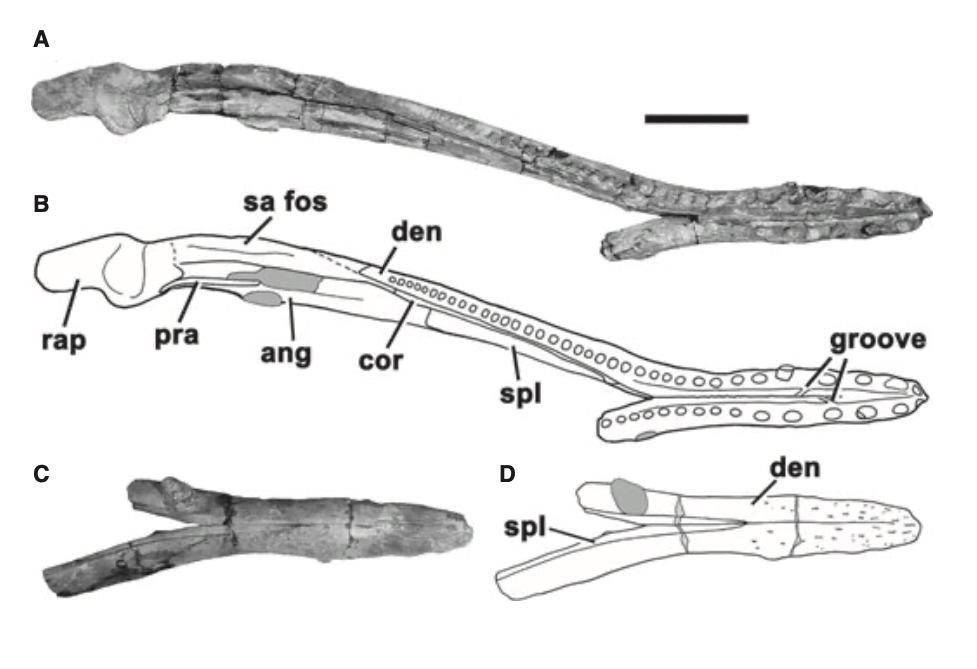Marmornectes

M. candrewi
Marmornectes is a pliosaur with a long and narrow snout from the Oxford Clay. It was described and named by Ketchum and Benson (2011a). The type and only specimen (BEDFM 1999.201) comprises a substantially complete skeleton including a partial skull. Marmornectes is similar to Peloneustes but possesses some basal characters that were lost in Peloneustes and other more derived pliosaurids (Ketchum and Benson 2011a). These include: lack of a strongly expanded rostrum (the snout has almost straight sides), tapering posterior process on cervical ribs, posterolateral cornu of coracoid does not extend as far laterally as the glenoid (shoulder socket), tibia lacks a facet for the intermedium, and the dorsal end of the ilium is not strongly expanded.

The specimen was discovered by Chris Andrew, former curator of the Bedford Museum, in a drainage trench in Quest Pit, Stewartby, near Bedford in 1998, and excavated by him, Mark Evans, and A. Garbutt later that year (Ketchum and Benson 2011a). Most articulated plesiosaur skeletons from the Oxford Clay Formation come from the K. jasoni Zone, but Marmornectes is notable because it comes from the slightly older (by 0.2 million years) S. enodatum Subzone of the S. calloviense Zone.

The name derives from marmor, the Latin for ‘marble’, or the “foaming surface of the sea” (Ketchum and Benson 2011a) (p.110), nectes, the Greek for ‘swimmer’, and the species honours C. Andrew.

